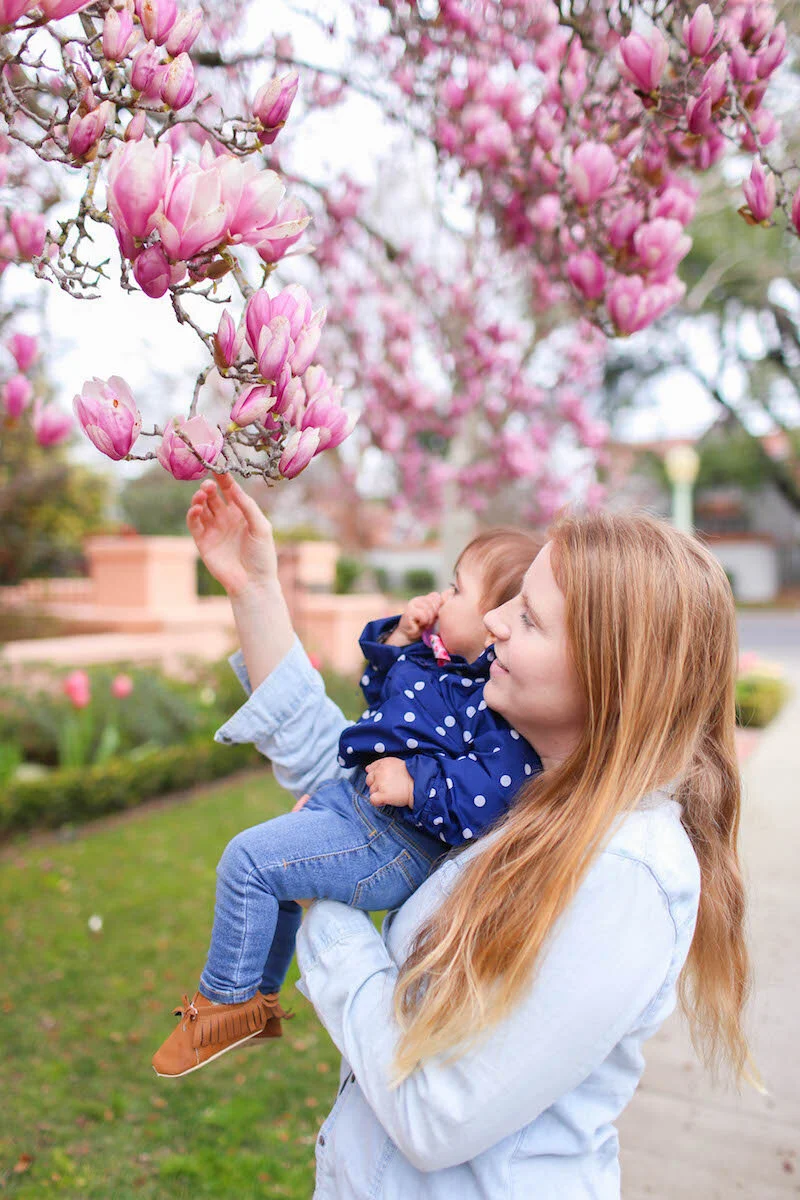How to Adopt a Dog When You Have Small Children
There’s often a misconception that adopted dogs are not suitable for a household with small children. The truth of the matter is that it takes effort and precautions brining a new dog into a family, adopted or not. It’s true that some adopted dogs come with behavioral issues, but there’s no guarantee that a purebred dog won’t have similar challenges.
Below I’ve outlined the steps I’ve taken to introduce my rescue Black Labrador Holly to our baby daughter Scout. Full disclaimer, I am not a professional dog trainer or veterinarian. I am a mom who’s owned many rescue dogs in my life and I have a passion for finding loving homes for dogs.
Tips to Adopt a Dog with Small Children:
Breed Selection
I strongly believe there are no bad dog breeds, just bad owners. With that being said, historically there are dog breeds that do better with young children. If you go to your local animal shelter, the breed options are very limited and you may not want a pitbull or Chihuahua mixed dog. Pet adopting agencies like Get Your Pet have a variety of breeds available for adoption in your area, and you can even filter to dogs compatible with children of different age groups.
First Meeting and Dog’s Family History
When you go to adopt your dog, you need to ask for as much history on him/her as you can. In some cases there isn’t much information available, and in those scenarios it is especially important for the dog to be observed and evaluated by a behavioral specialist.
When you go to visit the dog, be sure to bring your children with you to see the dog’s reaction and temperament with kids. For your child’s safety, if you see some red flags early on, err on the side of caution and move on to another dog.
The most important questions to ask when adopting a dog with small children:
What kind of living environment did the dog have before?
Has the dog had a lot of exposure to children? What ages?
Has the dog been evaluated by a behavioral specialist?
Has the dog shown any signs of aggression to people or other dogs?
Is the dog territorial with food and toys?
Bringing your Dog Home
It’s very important to give the dog time to settle in to their new environment and not to force them to interact with the children. If the dog is keeping a distance, let them observe and adjust to the loud noises and commotion from afar. Especially avoid kids running up to the dog and touching their face or grabbing them anywhere on their body.
If your dog wants to play with the kids, make sure it is always supervised. I strongly recommend a room divider or baby gate to keep the kids and dogs separated when you can’t have 100% of your attention on watching them. We use our baby gate to give Holly some “me time” away from Scout and she definitely enjoys her peace and quiet for some doggie nap time.
Teaching Kids How to Play with Your Dog
Just like we have to train our dogs, we have to teach our children how to responsibly interact with animals. From an early age they can learn how to pet the dog gently and learn not to climb on, poke or pull on them.
They should keep a safe distance when the dog is eating, be cautious with their toys and don’t surprise them when they’re sleeping. Setting boundaries on when it’s okay to play and when it’s not is important.
Take Action Immediately
At first signs of any aggression towards your children, you need to discipline your dog immediately. You never physically strike any animal when disciplining. I give my dogs stern verbal warnings which is all they need to know their behavior was wrong.
I take big efforts to give my dog plenty of space away from the baby so that she doesn’t get agitated. The most common scenario for growling is when a dog feels backed into a corner and doesn’t have an escape route. Be sure your house is set-up in a way so that your dog always feels like he/she can leave a situation.
Dedicated Dog Time
If you already had your dog before the baby arrives, sometimes your dog may experience jealousy issues (this happens with human siblings too). I make sure to give Holly plenty of love and attention, and spend time alone with her on walks and doing her favorite activities. Reminding her that she is a valued member of the family and the baby isn’t replacing her.
Hire a Dog Trainer
If you feel at a loss for what to do in certain situations with your dog and baby, hire a professional who can evaluate the situation and give an outside perspective. A dog behavioral specialist can give you insight into the dog’s behavior and provide an action plan for how to improve the situation.
If All Else Fails, Find a New Home
At the end of the day, your child’s safety comes first. If after all your efforts it’s still is not working out, surrender your dog to a designated agency. It’s a very sad situation but there may be a better home with the type of environment your dog requires.






















